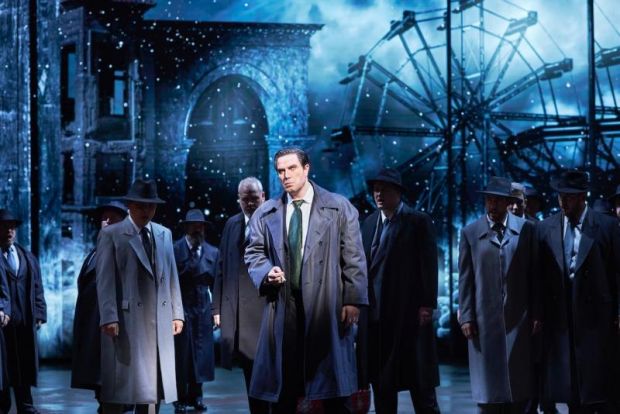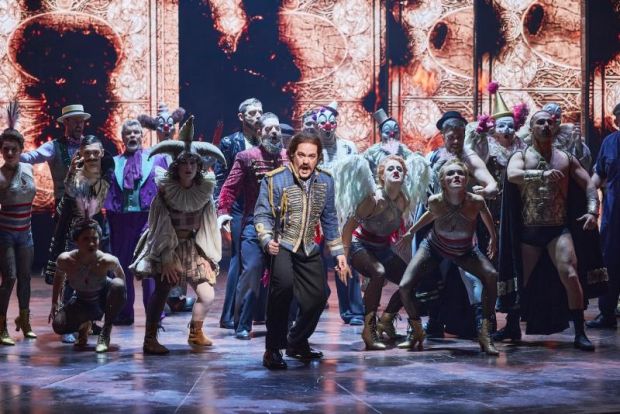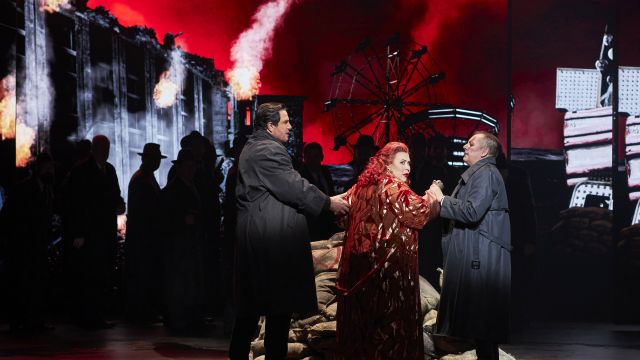Il Trovatore
This is a bloodcurdlingly brilliant performance which dazzles visually and musically.
As is the fashion for new productions from Opera Australia, digital scenario is the tool used to sweep the audience from one moment to the next. This is very handy in the opening scene when a chorus of soldiers are told about something horrific which happened fifteen years previously.
In traditional productions audience members must read the subtitles to get the gist of the story.
The prologue, sung dramatically by David Parkin (Ferrando), is that whilst a woman is being burnt at the stake for allegedly bewitching a child, her daughter attempts to take revenge by throwing a child of the executioner onto the pyre, but makes a mistake and tosses her own chid onto the fire. (Oops). So, she kidnaps and raises the child she intended to murder.
With the digital screens moving across the stage the audience is projected stunning modern images to aid their understanding of the narrative. It ranged from flames of the funeral pyre to stark landscapes of war, to stunning visual kaleidoscopes of gaudy gypsy colour.

Even with the visual aids understanding the story in the first two acts requires intense concentration to flip from the stunning images, cast and sub-titles. A straw poll of audience members at interval drew blanks as to whether they knew what was going on.
But it does not matter if you a little lost when the entertainment is so visceral. The most famous tune from the opera is the Anvil Chorus – which under the baton of Andrea Battistoni – began as the quietest pianissimo and built to a visceral crescendo by the skilful chorus.
The director Davide Livermore moved the drama from the Middle Ages to mid twentieth century Europe.
The Romani gypsies of the town became circus artists. The costumes, and circus tricks were eye-popping and reminiscent of a performance by Cirque do soleil.
Less satisfying in the update, was the costumes of the soldiers, who were confusingly dresses in suits and bowler hats.
The four leading principals, and most of the production team, were from overseas, so perhaps AO could be re-badged The Australian (International) Opera company or World Series Opera. Leah Crocetto (Leonara) from the United States, French-Russian Elena Gabouri (Azucena), Maxim Aniskin (Count di Luna) from Belarus, and South Korean Yonghoon Lee (Manrico) each had moments to shine and were highly accomplished.

Special mention to the superlative performance of Yonghoon Lee , who at full flight has a voice which sounds like a trumpet. He came on stage despite still recovering from a back injury incurred during Opera Australia’s production of Othello. So, he had no trouble empathising with the agony his character goes through. (A very nervous understudy – in the audience - was delighted to see him on stage in such good form.)
Yonghoon’s renditions of "Quale d’armi fragor poc’anzi intesi? "and "Ah, si, ben mio; coll’essere" were stunning. He earnt his thunderous ovation during the curtain call, but all that bowing looked a little painful, so perhaps what he really deserved is not applause but a good lie down.
David Spicer
Photographer. Keith Saunders
Subscribe to our E-Newsletter, buy our latest print edition or find a Performing Arts book at Book Nook.

